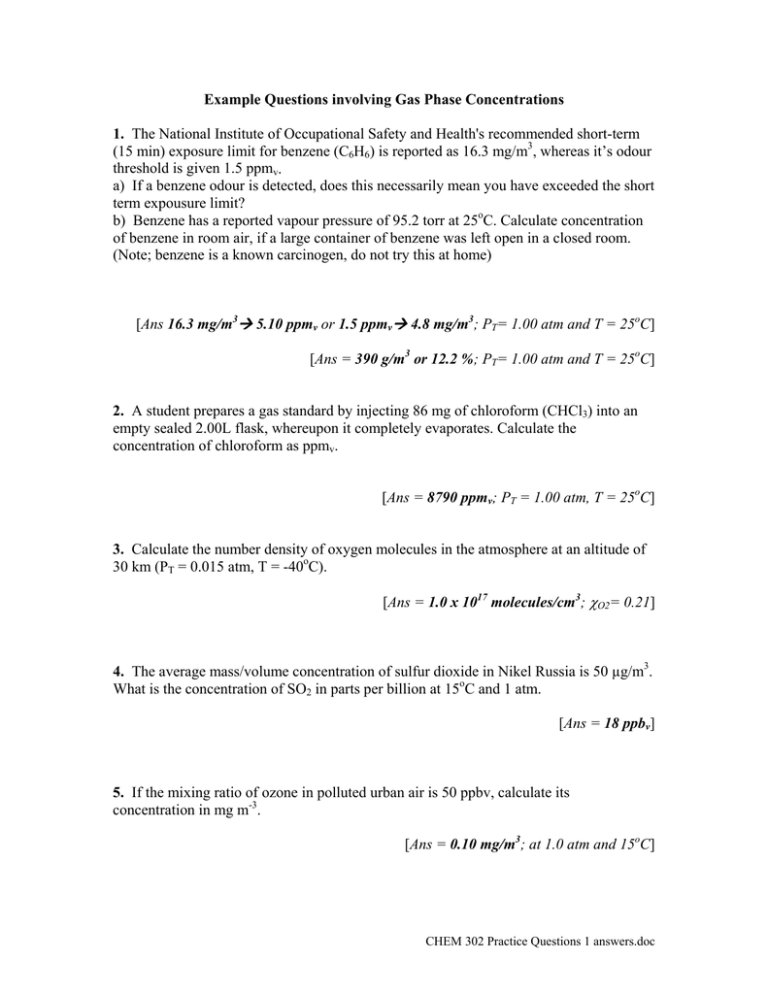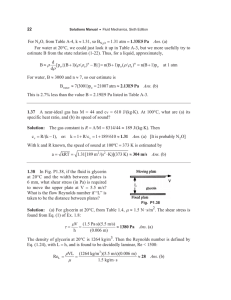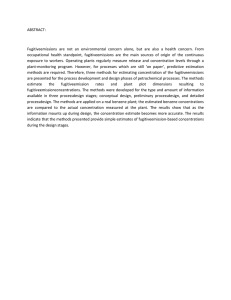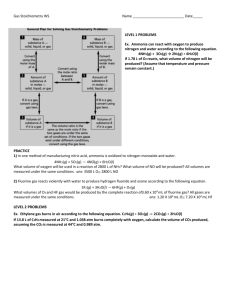Example Questions involving Gas Phase Concentrations
advertisement

Example Questions involving Gas Phase Concentrations 1. The National Institute of Occupational Safety and Health's recommended short-term (15 min) exposure limit for benzene (C6H6) is reported as 16.3 mg/m3, whereas it’s odour threshold is given 1.5 ppmv. a) If a benzene odour is detected, does this necessarily mean you have exceeded the short term expousure limit? b) Benzene has a reported vapour pressure of 95.2 torr at 25oC. Calculate concentration of benzene in room air, if a large container of benzene was left open in a closed room. (Note; benzene is a known carcinogen, do not try this at home) [Ans 16.3 mg/m3Æ 5.10 ppmv or 1.5 ppmvÆ 4.8 mg/m3; PT= 1.00 atm and T = 25oC] [Ans = 390 g/m3 or 12.2 %; PT= 1.00 atm and T = 25oC] 2. A student prepares a gas standard by injecting 86 mg of chloroform (CHCl3) into an empty sealed 2.00L flask, whereupon it completely evaporates. Calculate the concentration of chloroform as ppmv. [Ans = 8790 ppmv; PT = 1.00 atm, T = 25oC] 3. Calculate the number density of oxygen molecules in the atmosphere at an altitude of 30 km (PT = 0.015 atm, T = -40oC). [Ans = 1.0 x 1017 molecules/cm3; χO2= 0.21] 4. The average mass/volume concentration of sulfur dioxide in Nikel Russia is 50 µg/m3. What is the concentration of SO2 in parts per billion at 15oC and 1 atm. [Ans = 18 ppbv] 5. If the mixing ratio of ozone in polluted urban air is 50 ppbv, calculate its concentration in mg m-3. [Ans = 0.10 mg/m3; at 1.0 atm and 15oC] CHEM 302 Practice Questions 1 answers.doc



